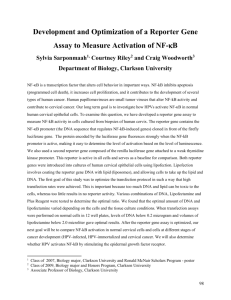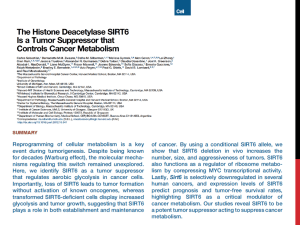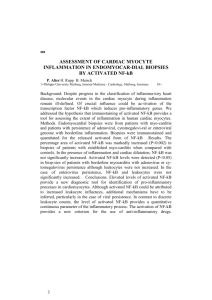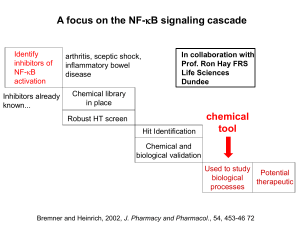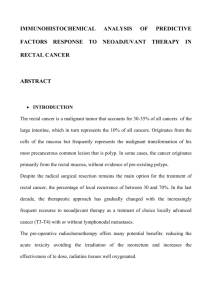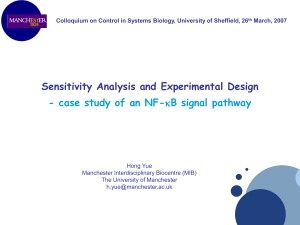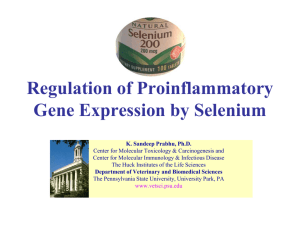NF-kB expression by stably expressed HPV 16 E6 and E7 genes in
advertisement
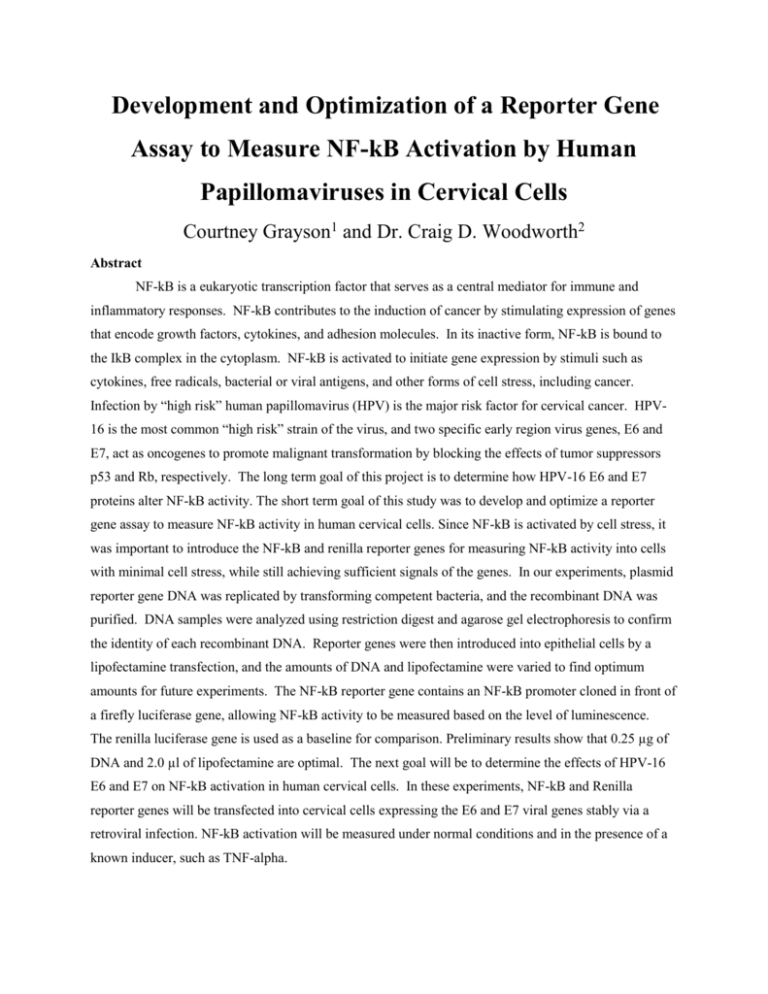
Development and Optimization of a Reporter Gene Assay to Measure NF-kB Activation by Human Papillomaviruses in Cervical Cells Courtney Grayson1 and Dr. Craig D. Woodworth2 Abstract NF-kB is a eukaryotic transcription factor that serves as a central mediator for immune and inflammatory responses. NF-kB contributes to the induction of cancer by stimulating expression of genes that encode growth factors, cytokines, and adhesion molecules. In its inactive form, NF-kB is bound to the IkB complex in the cytoplasm. NF-kB is activated to initiate gene expression by stimuli such as cytokines, free radicals, bacterial or viral antigens, and other forms of cell stress, including cancer. Infection by “high risk” human papillomavirus (HPV) is the major risk factor for cervical cancer. HPV16 is the most common “high risk” strain of the virus, and two specific early region virus genes, E6 and E7, act as oncogenes to promote malignant transformation by blocking the effects of tumor suppressors p53 and Rb, respectively. The long term goal of this project is to determine how HPV-16 E6 and E7 proteins alter NF-kB activity. The short term goal of this study was to develop and optimize a reporter gene assay to measure NF-kB activity in human cervical cells. Since NF-kB is activated by cell stress, it was important to introduce the NF-kB and renilla reporter genes for measuring NF-kB activity into cells with minimal cell stress, while still achieving sufficient signals of the genes. In our experiments, plasmid reporter gene DNA was replicated by transforming competent bacteria, and the recombinant DNA was purified. DNA samples were analyzed using restriction digest and agarose gel electrophoresis to confirm the identity of each recombinant DNA. Reporter genes were then introduced into epithelial cells by a lipofectamine transfection, and the amounts of DNA and lipofectamine were varied to find optimum amounts for future experiments. The NF-kB reporter gene contains an NF-kB promoter cloned in front of a firefly luciferase gene, allowing NF-kB activity to be measured based on the level of luminescence. The renilla luciferase gene is used as a baseline for comparison. Preliminary results show that 0.25 µg of DNA and 2.0 µl of lipofectamine are optimal. The next goal will be to determine the effects of HPV-16 E6 and E7 on NF-kB activation in human cervical cells. In these experiments, NF-kB and Renilla reporter genes will be transfected into cervical cells expressing the E6 and E7 viral genes stably via a retroviral infection. NF-kB activation will be measured under normal conditions and in the presence of a known inducer, such as TNF-alpha. 1 2 Class of 2009, Bio-Molecular Science, Clarkson University Honors Program, Poster Presentation Department of Biology, Clarkson University
